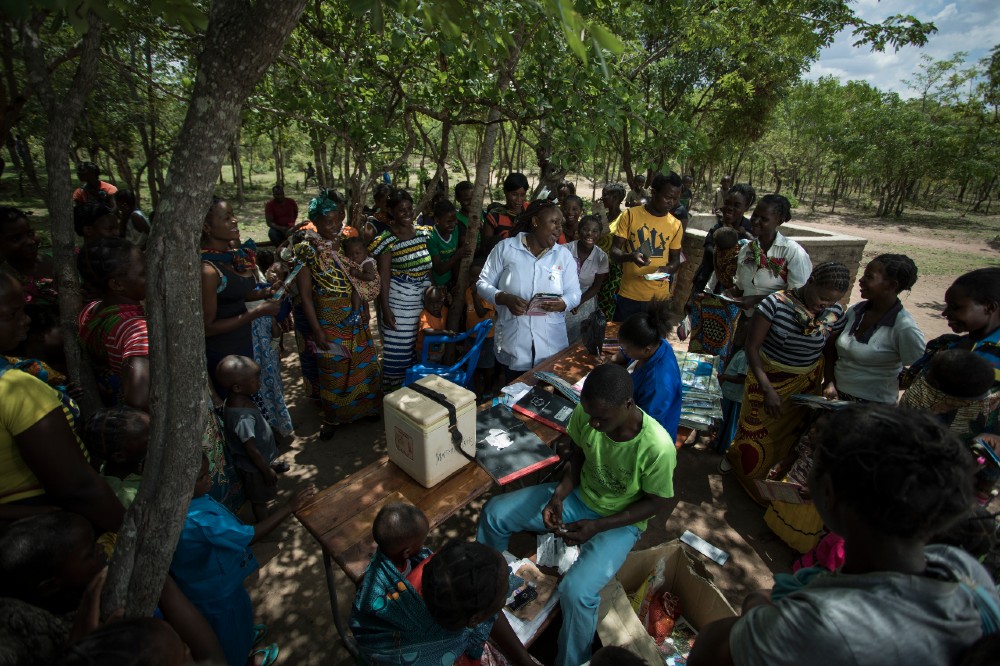Nearly half of the world’s population is at risk of malaria. However, Africa carries the highest burden. In 2019, the region was home to 94% of all malaria cases and deaths. The youngest are particularly affected. In many places, mosquito-borne infectious disease is one of the leading causes of death in children under five. But older children and adults are also hit hard by the disease: If they fall ill, they cannot go to school or work, miss education, or are unable to provide for their families. And Covid-19 has complicated things further.
Mirriam Banda Chisamba from Zambia is familiar with this as well. In 2019 her home country reported 5 million cases of malaria. Though when Mirriam was a child she had malaria almost every year. “This had an impact on my education, because I would miss out on school for days, sometimes nearly a week,” she says. “Back then we had no bednets, no rapid diagnostic tests, no treatments.” Preventive measures like these were only available for those able to pay them. Her family, Mirriam says, didn’t have the means to afford them, so malaria was a recurring suffering for the young girl as for many other families.
Today she is a mother of three and works as a midwife, nurse and health counsellor at a rural health clinic in Katete, a district in Eastern Zambia. There Mirriam sees malaria still every day. In her region, between 20-29% of children under 5 are infected each year. But the situation has changed since the start of the collaboration with the Global Fund in 2003, she says.
In 2019 alone, with Global Fund support the country has distributed 1,7 million mosquito nets; 3 million cases of malaria were treated and 1,4 million households were protected through indoor residual spraying. Together the partners focus on the most vulnerable: in 2019 300 000 pregnant women, who attended antenatal clinics, received intermittent preventive treatment for malaria and malaria services are integrated at community level.

When Mirriam started her career in the health sector, many people died because to confirm the disease, a lab was required for a safe and reliable diagnosis. This took time, at the cost of many lives. “For me as a health worker this was so disheartening”, Mirriam remembers. “Nowadays we have prevention measures and rapid diagnostic tests. It only takes about 15 minutes to know if the patient is infected, and you are able to start the treatment right there and then.”
The last time Mirriam saw a family member in hospital due to malaria, was in 2011 when she almost lost her oldest daughter to the disease. “Luckily she survived, thanks to the availability of malaria diagnostics and treatments, which are now readily available at the health facility.” None of her other children have ever contracted malaria, because she makes sure the whole family sleeps under bednets throughout the year and has her house sprayed when the annual campaign takes place.
“People are no longer suffering like they used to back then, they are more productive, and so am I”, Mirriam says. “All this thanks to my government and the Global Fund. I’m really grateful for that.”
And COVID-19? As of mid April WHO has reported 90.218 confirmed cases of COVID-19 with 1.229 deaths in Zambia. But Mirriam is optimistic. Just as with malaria, the key measures to contain COVID-19 are community sensitization and equitable access to the right tools, she reports. Her clinic was also able to adapt malaria, HIV and TB programmes to the new challenge, ensuring that these life saving interventions could continue. Zambia leveraged additional funding through the Global Fund’s C19RM to adapt programs and mitigate the impact of COVID-19.
